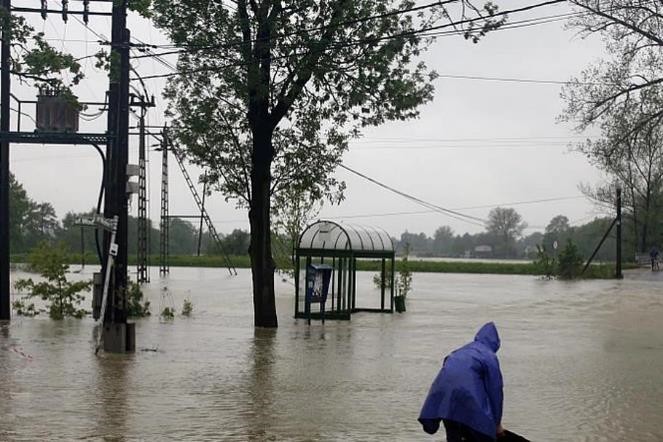Catchment Name and Location: The upper part of the Skawa catchment, located in southern Poland. Boarders with the Czech Republic.
Flash floods are related to excessive precipitation in a mountainous environment. Significant flood events back in 1983, 1991, 1992. The most recent flood events were in 2010, 2014, and 2019. Around 24 total flood events in XX and XXI centuries. The main reason for flooding in this area is excessive precipitation and precipitation accumulation around neighbouring regions, leading to significant surface runoff. The selected catchment is relatively small (~240 km2), its water network is characterized by a dense dominant short stream with significant slopes, which lead to a quick time of response (around 2,5h). There are four rain gauges in the catchment area, of which one is directly located in the investigated study area. The rain gauges are not well distributed over the entire study area, making the areal estimation of precipitation more challenging. Radar data application over this area is difficult due to radar shadow phenomena. Therefore, hydrological and hydraulic modeling over that kind of area is extremely challenging, while essential at the same time due to the risk of flooding.
Historically speaking, flash floods in this area were already noticed in the XV century. The most recent flood events occurred in 2010, 2014, and 2019 leading to substantial material losses in built-up parts of the catchment and significant changes to the topography in forested areas. The logs transported in the streams have a considerable impact on the accumulation of sediment transport, increasing the risk of flooding. Climate change impact will most likely result in even more frequent and intense precipitation events. Considering that, we can expect even more severe floods in the years to come. Water pollution from infrastructure in built-up areas often happens during flooding. That leads to the release of different pollutants from sewer systems, treatment plans, oil tanks, etc.
The case study of the upper Skawa catchment due to its characteristics (relatively small area, mountainous character, quick response time, and a limited number of rain gauges) is representative for similar study areas in Slovakia and the Czech Republic, well as other parts of Europe.
Flood on the Skawa river in 2010 (Source: Newsweek.pl)

